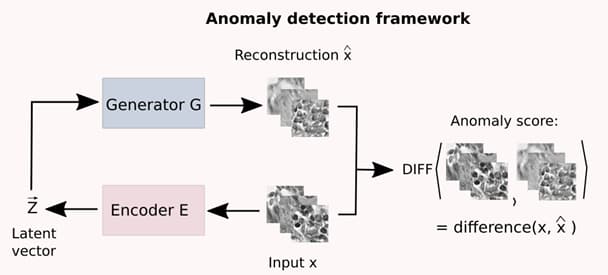AIVisualization subproject: Using Machine Learning for anomaly detection in medical imagery

Milda Pocevičiūtė, Gabriel Eilertsen, Claes Lundström, “Unsupervised anomaly detection in digital pathology using GANs”, IEEE International Symposium on Biomedical Imaging, 2021.
In early 2021, an investigation was finalized on if a Generative Adversarial Network (GAN) approach is capable of out-of-distribution (OOD) detection. The results, showing improvements over previous state-of-the-art, were published as a peer-reviewed paper at the 2021 ISBI conference.
Artificial intelligence (AI) has shown great potential in aiding medical doctors specialized in pathology in their daily tasks: from cancer detection and diagnosis to treatment planning. In order to guarantee a safe use of these approaches in practice, we need to know when the algorithm encounters anomalous data for which it is not capable of producing reliable predictions. For example, some unknown or rare types of disease that AI has not been trained to handle should be manually assessed by the medical doctors to avoid potential risks. In this work we developed an anomaly detection framework based on Generative Adversarial Network (GAN): an algorithm that learns to produce new data that comes from the same distribution as the training data. The framework is trained to encode histopathology images into a latent vector space and then reconstruct the original images from the encoding. During the testing stage, if the reconstruction is successful, the data sample is deemed to be coming from the same data distribution as the training data. However, if the reconstructed image differs substantially from the original input, it is flagged as an anomaly. The proposed framework has achieved better results in detecting anomalous histopathology data compared to the state-of-the-art methods. The future work will focus on evaluating and adapting it to different clinically relevant scenarios in digital pathology.




